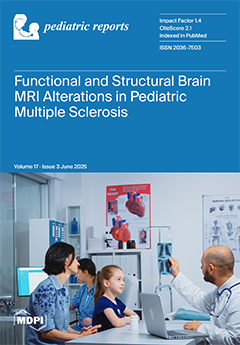To evaluate and compare the awareness and implementation of children’s rights in pediatric hospital settings from the perspectives of parents and children, this study emphasizes ethical considerations in healthcare, focusing on communication practices, privacy, and participation rights.
Methods: A cross-sectional study was conducted
[...] Read more.
To evaluate and compare the awareness and implementation of children’s rights in pediatric hospital settings from the perspectives of parents and children, this study emphasizes ethical considerations in healthcare, focusing on communication practices, privacy, and participation rights.
Methods: A cross-sectional study was conducted in the largest pediatric hospital in Greece between February and April 2023. A total of 250 parents and 150 children participated. Data were collected using a structured questionnaire assessing six domains of children’s rights: access to information, participation, privacy, non-discrimination, play and recreation, and parental support. Statistical analysis included chi-square tests for categorical variables, with significance set at
p < 0.05.
Results: Significant discrepancies were identified between parents and children in their awareness of children’s rights. Only 2.9% of children were aware of printed lists of rights, and 46.3% of parents reported not knowing of their existence (
p = 0.005). Children evaluated communication practices, such as the use of child-friendly language, more positively than parents (
p = 0.02). Parents reported higher satisfaction with explanations of health conditions, treatments, and medication side effects (
p < 0.001). Regarding privacy, children rated room allocation and privacy practices during examinations less positively than parents (
p = 0.02).
Conclusions: The study highlights critical gaps in the communication and implementation of children’s rights within pediatric hospitals. Tailored interventions, including staff training, development of child-friendly materials, and policy adjustments, are necessary to bridge these gaps and ensure an ethically sound healthcare environment that prioritizes the rights and well-being of both children and their families.
Full article






